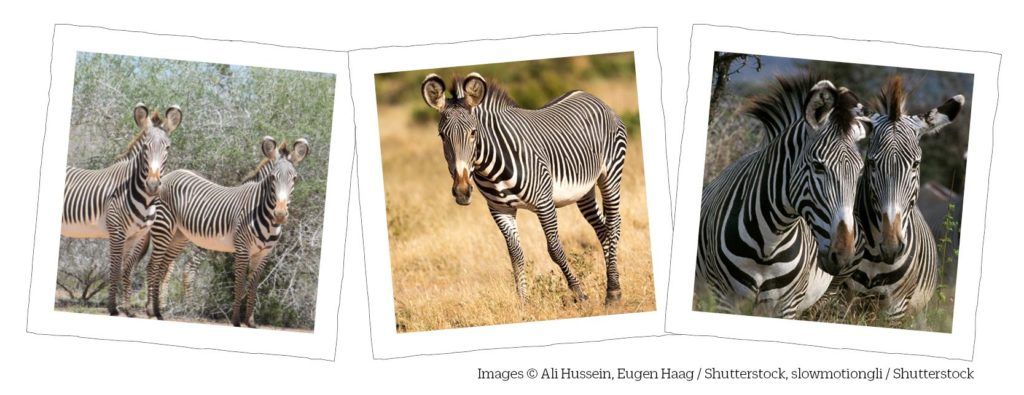Zebra appeal
Make your donationPutting zebras back on the map
Grevy’s zebras, the largest and most threatened of the three zebra species, are only found in grasslands and savannahs of Kenya and Ethiopia and play an important role in maintaining these plains. There are now only about 2,500 left in the wild. Hunting for skins caused their initial decline, but now habitat loss and drought are their greatest threats. Most Grevy’s zebras live in central Kenya, but there are some forgotten herds roaming in East Kenya. Official figures don’t include them, even though they’re the last zebras in this part of Africa. We think there are 80-100 zebras in this region, and with so few left, each one is vital to the survival of the species. It’s critical they’re also protected.
Fortunately, our established colleague and award-winning conservationist, Abdullahi Ali, is from this very area. We’re supporting him to protect the zebras others have forgotten.

Being from the area, Ali understands the landscape, the people and the many challenges here. This region’s overgrazed by cattle, forcing zebras to compete for food, and the habitat is so degraded it can’t support all the animals. Severe and recurring droughts particularly threaten lactating zebras who desperately need water to feed their foals. There’s significant poaching supplying a bushmeat trade at the Kenya-Somali border, and Ali’s concerned about an imminent plan for an infrastructure development of pipelines, roads and railways that’ll fragment the habitat further. The situation is dire. Grevy’s zebras are only just surviving, against all the odds.
It’s paramount these zebras get the conservation attention they desperately need. Ali’s team are searching for other isolated herds, and will identify and record each individual zebra, producing a map of the Grevy’s zebra population in this region. This is the vital first step to provide all the Grevy’s zebras with a safe haven in Garissa, East Kenya. This predator-proof sanctuary will help Ali’s team bolster Grevy’s zebra numbers, gradually releasing them back into the wild.
Meanwhile, Ali and his colleagues are busy restoring desperately needed grassland for wildlife to graze. They’ve cleared 400 acres of invasive trees and seeded 1,000 acres of grassland. Encouragingly, zebras have already been spotted in the restored areas.
Thank you.

